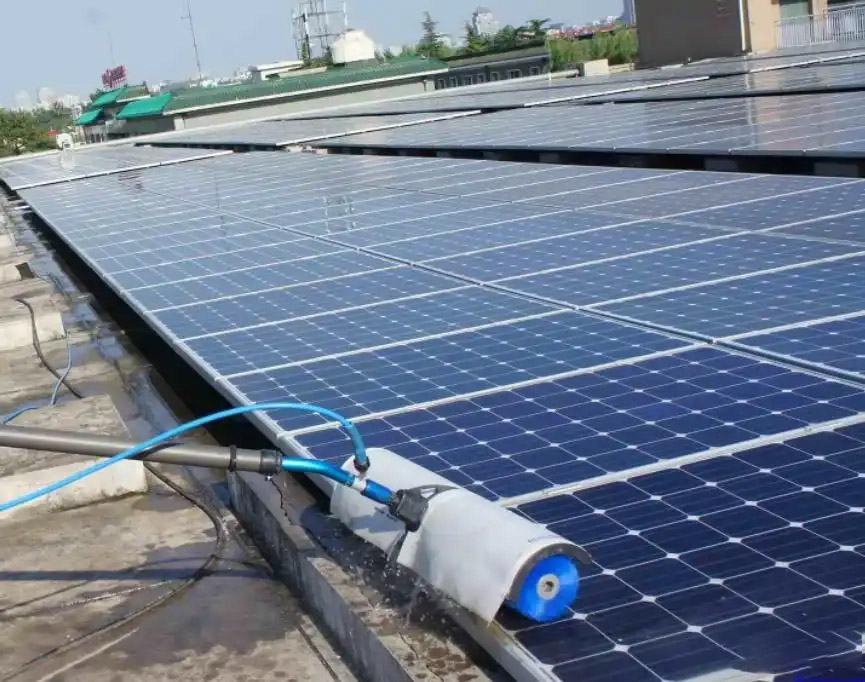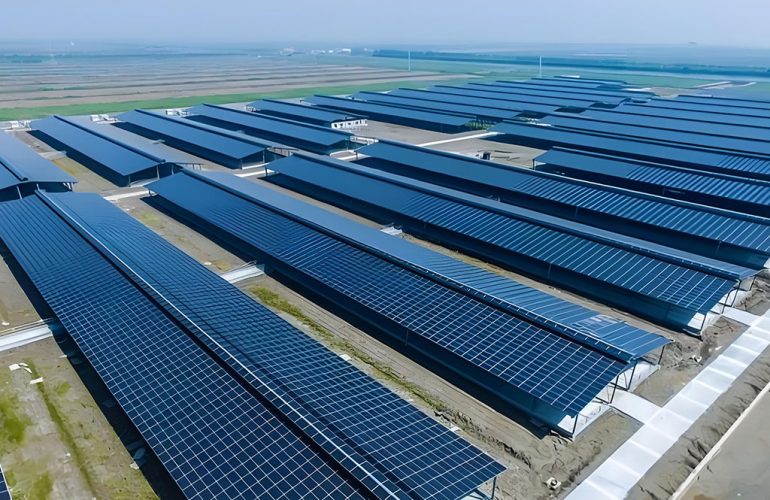With the increasing global attention to sustainable development and green energy, solar photovoltaic power generation, as a clean and environmentally friendly form of energy, has been favored by more and more countries and households. Especially in China, with technological progress and policy support, photovoltaic power generation has been widely applied. Not only that, more and more households and businesses are also choosing to install solar photovoltaic systems, hoping to save energy costs and reduce carbon emissions through this method.

1、 The main advantages of solar photovoltaic power generation
1. Environmental protection and energy conservation
Solar energy is a green and renewable energy source that does not emit pollutants during its use. Compared to traditional coal and electricity production, solar power generation produces almost no greenhouse gases and has minimal impact on the environment. The use of solar photovoltaic systems can effectively reduce carbon footprint and contribute to global emission reduction goals.
2. Reduce energy costs
Solar photovoltaic power generation can directly convert solar energy into electrical energy. After installation, users can be self-sufficient and reduce the need to purchase electricity from the grid. With the advancement of technology and the reduction of costs, the price of solar panels is becoming increasingly affordable. Many households and businesses can recoup their costs within a few years by installing photovoltaic systems, and in the long run, they can significantly reduce their electricity bills.
3. Strong adaptability, suitable for various scenarios
The installation of solar photovoltaic power generation systems is not limited by geography, especially in areas with abundant sunshine, where the efficiency of solar photovoltaic systems is higher. In addition, solar photovoltaic systems are also suitable for various types of buildings such as homes, businesses, and industries. They can be customized with suitable power generation scales according to demand, and can even be installed in multiple places such as roofs, carports, and open spaces.
4. Low maintenance costs
Compared with traditional power systems, the maintenance cost of solar photovoltaic power generation systems is relatively low. The system can generally operate for 20-30 years, and the maintenance requirements mainly include regular cleaning and inspection of the battery panels. Fewer mechanical moving parts also mean lower failure rates.
2、 Potential drawbacks of solar photovoltaic power generation
Although solar photovoltaic power generation has many advantages, there are also some drawbacks and limitations that cannot be ignored in its widespread application.
1. High initial investment
Although the long-term cost of solar photovoltaic power generation is relatively low, its initial investment cost is relatively high. The purchase and installation of solar panels, inverters, batteries, and other components require significant capital investment. For some households and businesses, this expenditure may become a major obstacle when considering whether to install photovoltaic systems.
2. Restricted by weather and lighting conditions
The efficiency of solar photovoltaic power generation is greatly affected by factors such as weather, season, and sunshine duration. In areas with rainy or hazy weather, or poor lighting conditions, the power generation efficiency of photovoltaic systems will decrease, making it impossible to achieve stable power generation around the clock. This is also a major drawback of solar photovoltaic systems compared to other energy systems such as wind and hydro power.
3. Land occupation and aesthetic issues
If there is not enough roof space around the building where the photovoltaic power generation system is installed, it may be necessary to occupy some vacant land to install photovoltaic panels, which may become a problem in some high-density areas or urban residential areas. In addition, some people may feel that the photovoltaic panels on the roof affect the aesthetics, especially in traditional style buildings, which appear abrupt.
4. Disposal of discarded photovoltaic panels
The service life of solar photovoltaic panels is generally 20-30 years, and after their service life ends, these photovoltaic panels may become electronic waste. Although some photovoltaic panels have high recycling value, there are still certain technical challenges and environmental pollution issues in the process of recycling and processing. How to reasonably recycle and reuse waste photovoltaic panels has become a long-term challenge in the development of the solar energy industry.
5. Power generation fluctuations and storage issues
A major issue with solar power generation is volatility, where the amount of electricity generated during the day is usually higher and there is no electricity generated at night. To solve this problem, energy storage batteries must be equipped to store excess electricity during the day, but the cost and efficiency of energy storage devices remain a bottleneck. Although technological development is constantly improving the storage capacity of batteries, energy storage devices are still relatively expensive at present.

3、 How to solve the potential problems of solar photovoltaic power generation?
1. Reduce initial investment costs
With the continuous development of solar energy technology, the price of photovoltaic equipment has been decreasing year by year, and it is expected that the initial investment will gradually decrease in the next few years. At the same time, many countries and regions have also introduced subsidy policies to provide financial subsidies or preferential treatment for users to install solar energy systems, reducing the installation burden.
2. Improve system efficiency and energy storage technology
The advancement of energy storage technology is crucial to address the impact of uneven weather and sunlight. In the future, more efficient energy storage batteries will make the application of solar photovoltaic power generation more widespread. In addition, the construction of smart grids can help distributed power generation systems better coordinate and schedule, improve the stability and utilization of photovoltaic systems.
3. Recycling and Environmental Protection Technologies
More and more enterprises and research institutions are actively researching and developing photovoltaic panel recycling technologies to address the issue of disposing of discarded photovoltaic panels. Through innovative recycling technologies, not only can environmental pollution be reduced, but the reuse rate of photovoltaic panels can also be improved, reducing resource waste.
4、 Summary: Light and shadow coexist, choosing solar photovoltaic power generation requires caution
As a representative of clean energy, solar photovoltaic power generation technology has certain disadvantages and challenges, but its advantages in environmental protection, energy conservation and consumption reduction, and long-term benefits cannot be ignored. With the advancement of technology and policy support, the cost of photovoltaic power generation will continue to decrease, efficiency will continue to improve, and current problems will gradually be solved.
When choosing whether to install a solar photovoltaic power generation system, users should make scientific and reasonable decisions based on their own needs, regional conditions, and budget. If conditions permit, solar photovoltaic power generation is undoubtedly an environmentally friendly, economical, and long-term investment value choice.


